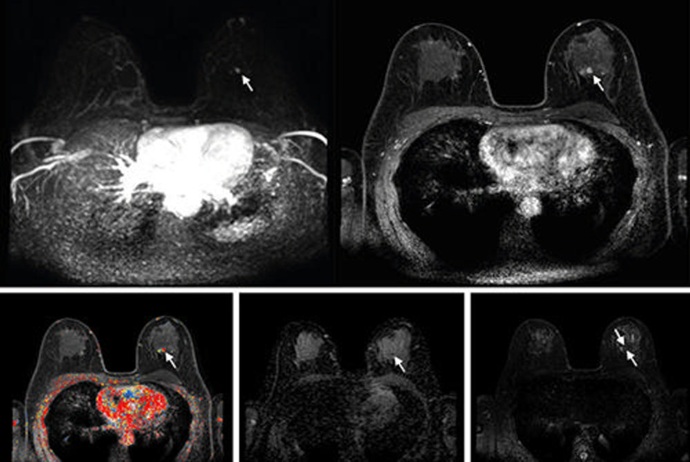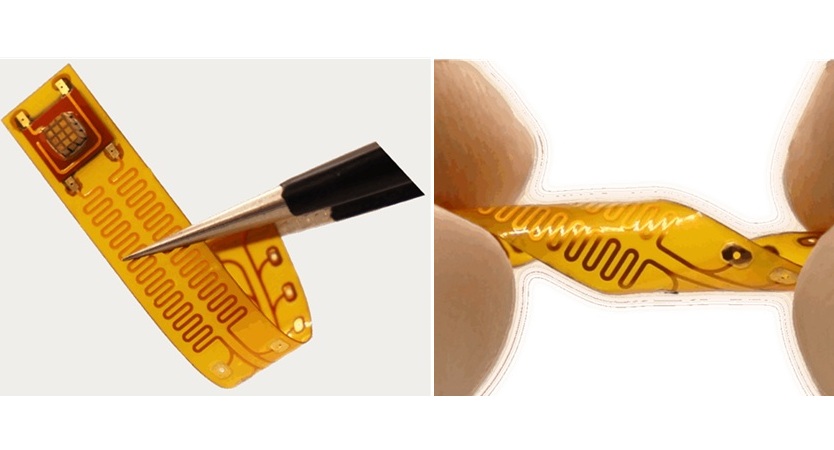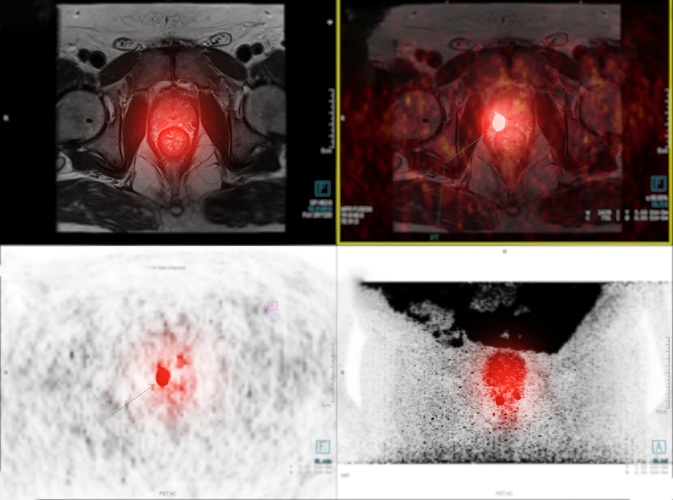DCR Identifies Pleural Invasion of Lung Tumors
|
By MedImaging International staff writers Posted on 15 Feb 2021 |
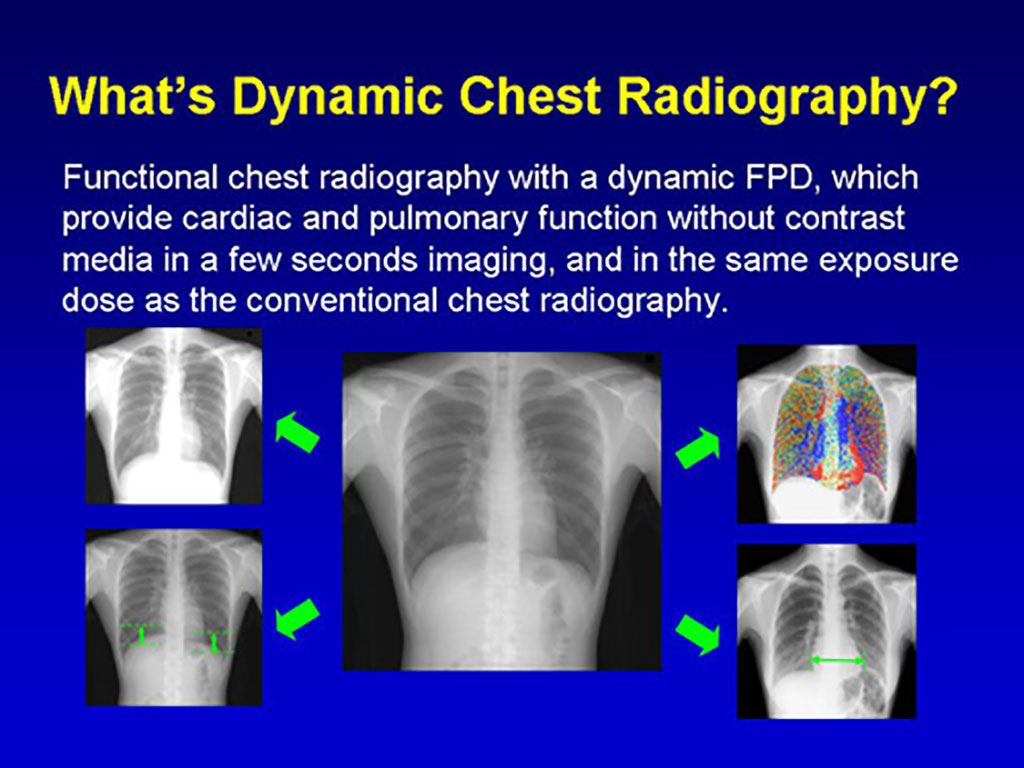
Image: Examples of DCR images (Photo courtesy of Rie Tanaka/ Kanazawa University)
Dynamic chest radiography (DCR) holds promise for assessment of tumor invasion and adhesion in the parietal pleura, according to a new study.
Researchers at Kanazawa University (Japan), Duke University (Durham NC, USA), and Yokohama City University (Japan) conducted a proof-of-concept study to investigate the feasibility of preoperative evaluation of pleural invasion/adhesion of lung tumors with DCR, using a four‐dimensional (4D) extended cardiac‐torso (XCAT) computational phantom with simulated respiratory and cardiac motions; to simulate lung tumors, a 30‐mm diameter sphere was inserted into each lobe of the phantom.
The virtual patient during respiration was virtually projected using an X‐ray simulator in posteroanterior (PA) and oblique directions, and sequential bone suppression (BS) images were created. Measurement points (tumor, rib, and diaphragm) were automatically tracked on the simulated images by a template matching technique. The researchers then calculated five quantitative metrics related to the movement distance and directions of the targeted tumor, and evaluated whether DCR could distinguish between tumors with and without pleural invasion/adhesion.
The results showed precise tracking of the targeted tumor, without undue influence of rib shadows. There was a significant difference in all five quantitative metrics between the lung tumors with and without pleural invasion. Metrics related to movement distance were effective for tumors in the middle and lower lobes, while those related to movement directions were effective for tumors close to the frontal chest wall on the oblique projection view. The oblique views were useful for the evaluation of the space between the chest wall and a moving tumor. The study was published on February 3, 2021, in Medical Physics.
“Imaging modalities like cine MRI or breathing chest CT can be used to assess tumor invasion and adhesion, but both are more costly than x-ray; MRI often isn't available, while CT carries a higher radiation burden than radiography,” said lead author Rie Tanaka, PhD, of Kanazawa University. “With DCR, a series of sequential chest radiographs are obtained of a standing patient through a 10-second respiratory cycle. Except for the breathing pattern, images are acquired in the same manner as a conventional radiograph.”
Preoperative assessment of tumor invasion and adhesion is imperative when planning surgical excision of lung tumors. If the tumor moves independent of parietal or mediastinal pleura, it means that it is not invasive or strongly adheres to lung tissue, and therefore may be easier to remove surgically.
Related Links:
Kanazawa University
Duke University
Yokohama City University
Researchers at Kanazawa University (Japan), Duke University (Durham NC, USA), and Yokohama City University (Japan) conducted a proof-of-concept study to investigate the feasibility of preoperative evaluation of pleural invasion/adhesion of lung tumors with DCR, using a four‐dimensional (4D) extended cardiac‐torso (XCAT) computational phantom with simulated respiratory and cardiac motions; to simulate lung tumors, a 30‐mm diameter sphere was inserted into each lobe of the phantom.
The virtual patient during respiration was virtually projected using an X‐ray simulator in posteroanterior (PA) and oblique directions, and sequential bone suppression (BS) images were created. Measurement points (tumor, rib, and diaphragm) were automatically tracked on the simulated images by a template matching technique. The researchers then calculated five quantitative metrics related to the movement distance and directions of the targeted tumor, and evaluated whether DCR could distinguish between tumors with and without pleural invasion/adhesion.
The results showed precise tracking of the targeted tumor, without undue influence of rib shadows. There was a significant difference in all five quantitative metrics between the lung tumors with and without pleural invasion. Metrics related to movement distance were effective for tumors in the middle and lower lobes, while those related to movement directions were effective for tumors close to the frontal chest wall on the oblique projection view. The oblique views were useful for the evaluation of the space between the chest wall and a moving tumor. The study was published on February 3, 2021, in Medical Physics.
“Imaging modalities like cine MRI or breathing chest CT can be used to assess tumor invasion and adhesion, but both are more costly than x-ray; MRI often isn't available, while CT carries a higher radiation burden than radiography,” said lead author Rie Tanaka, PhD, of Kanazawa University. “With DCR, a series of sequential chest radiographs are obtained of a standing patient through a 10-second respiratory cycle. Except for the breathing pattern, images are acquired in the same manner as a conventional radiograph.”
Preoperative assessment of tumor invasion and adhesion is imperative when planning surgical excision of lung tumors. If the tumor moves independent of parietal or mediastinal pleura, it means that it is not invasive or strongly adheres to lung tissue, and therefore may be easier to remove surgically.
Related Links:
Kanazawa University
Duke University
Yokohama City University
Latest Radiography News
- AI Hybrid Strategy Improves Mammogram Interpretation
- AI Technology Predicts Personalized Five-Year Risk of Developing Breast Cancer
- RSNA AI Challenge Models Can Independently Interpret Mammograms
- New Technique Combines X-Ray Imaging and Radar for Safer Cancer Diagnosis
- New AI Tool Helps Doctors Read Chest X‑Rays Better
- Wearable X-Ray Imaging Detecting Fabric to Provide On-The-Go Diagnostic Scanning
- AI Helps Radiologists Spot More Lesions in Mammograms
- AI Detects Fatty Liver Disease from Chest X-Rays
- AI Detects Hidden Heart Disease in Existing CT Chest Scans
- Ultra-Lightweight AI Model Runs Without GPU to Break Barriers in Lung Cancer Diagnosis
- AI Radiology Tool Identifies Life-Threatening Conditions in Milliseconds

- Machine Learning Algorithm Identifies Cardiovascular Risk from Routine Bone Density Scans
- AI Improves Early Detection of Interval Breast Cancers
- World's Largest Class Single Crystal Diamond Radiation Detector Opens New Possibilities for Diagnostic Imaging
- AI-Powered Imaging Technique Shows Promise in Evaluating Patients for PCI
- Higher Chest X-Ray Usage Catches Lung Cancer Earlier and Improves Survival
Channels
MRI
view channel
AI-Assisted Model Enhances MRI Heart Scans
A cardiac MRI can reveal critical information about the heart’s function and any abnormalities, but traditional scans take 30 to 90 minutes and often suffer from poor image quality due to patient movement.... Read more
AI Model Outperforms Doctors at Identifying Patients Most At-Risk of Cardiac Arrest
Hypertrophic cardiomyopathy is one of the most common inherited heart conditions and a leading cause of sudden cardiac death in young individuals and athletes. While many patients live normal lives, some... Read moreUltrasound
view channel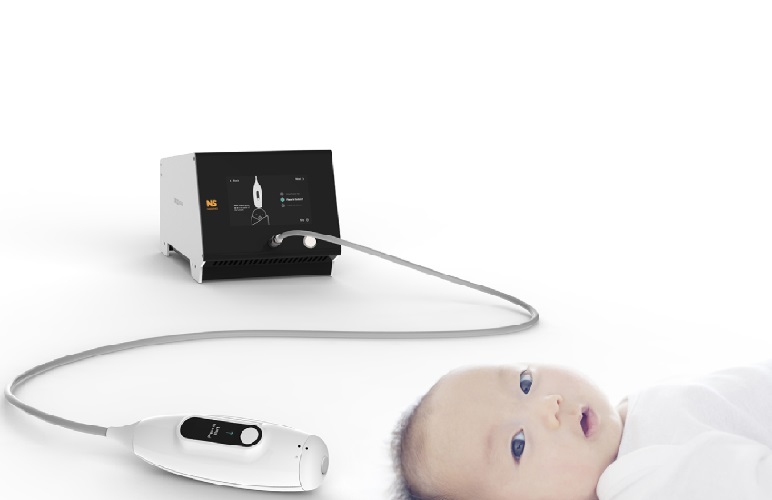
Non-Invasive Ultrasound-Based Tool Accurately Detects Infant Meningitis
Meningitis, an inflammation of the membranes surrounding the brain and spinal cord, can be fatal in infants if not diagnosed and treated early. Even when treated, it may leave lasting damage, such as cognitive... Read more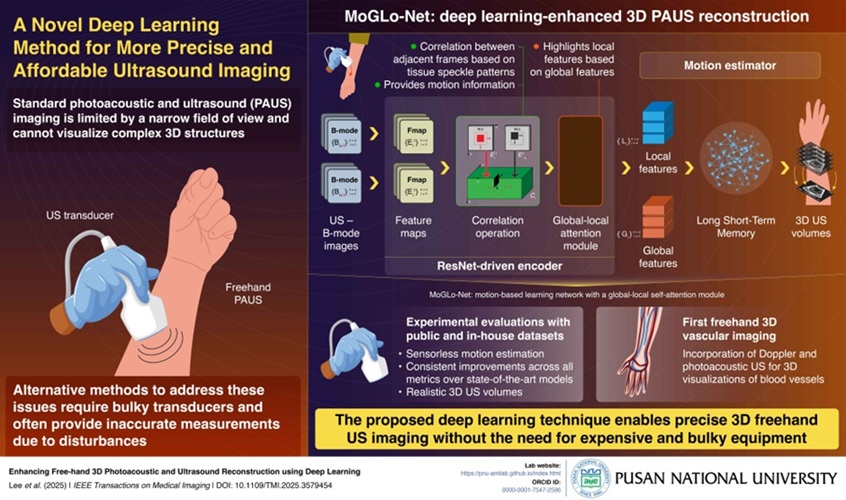
Breakthrough Deep Learning Model Enhances Handheld 3D Medical Imaging
Ultrasound imaging is a vital diagnostic technique used to visualize internal organs and tissues in real time and to guide procedures such as biopsies and injections. When paired with photoacoustic imaging... Read moreNuclear Medicine
view channel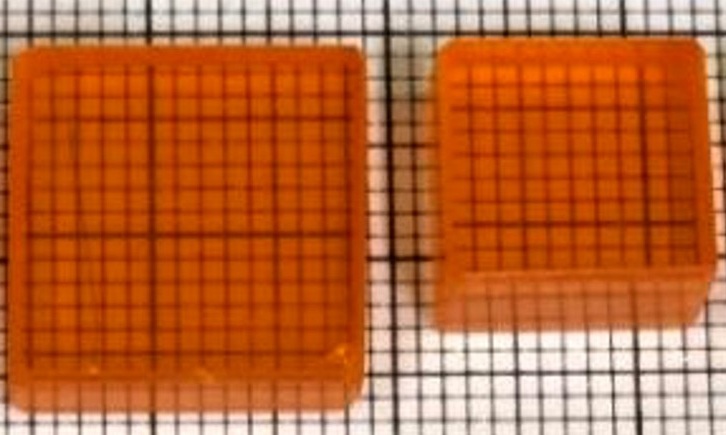
New Camera Sees Inside Human Body for Enhanced Scanning and Diagnosis
Nuclear medicine scans like single-photon emission computed tomography (SPECT) allow doctors to observe heart function, track blood flow, and detect hidden diseases. However, current detectors are either... Read more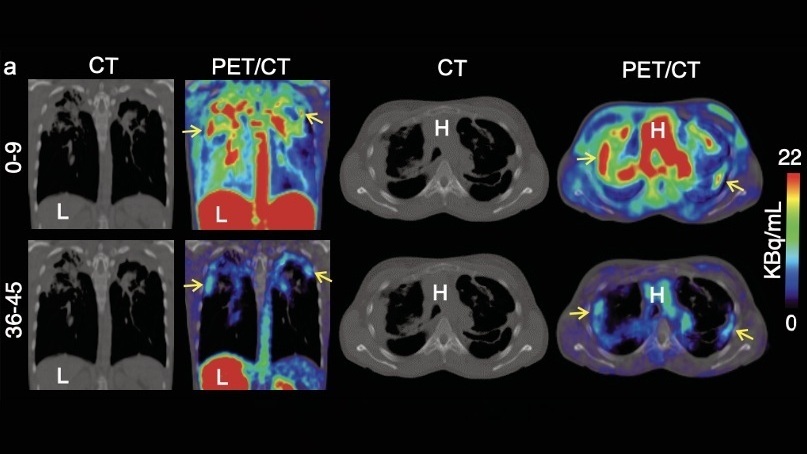
Novel Bacteria-Specific PET Imaging Approach Detects Hard-To-Diagnose Lung Infections
Mycobacteroides abscessus is a rapidly growing mycobacteria that primarily affects immunocompromised patients and those with underlying lung diseases, such as cystic fibrosis or chronic obstructive pulmonary... Read moreGeneral/Advanced Imaging
view channel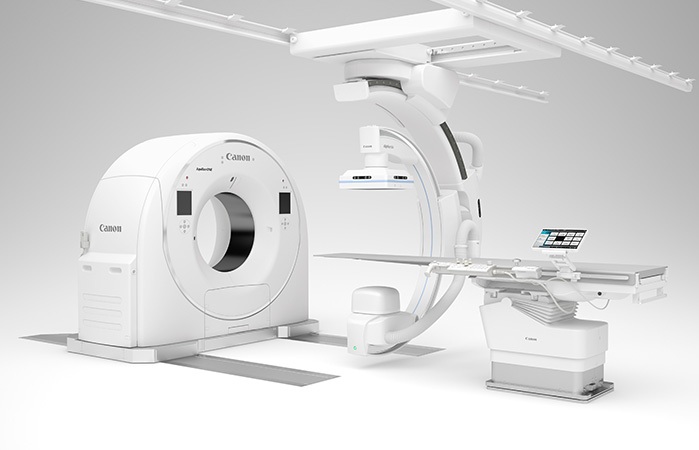
Cutting-Edge Angio-CT Solution Offers New Therapeutic Possibilities
Maintaining accuracy and safety in interventional radiology is a constant challenge, especially as complex procedures require both high precision and efficiency. Traditional setups often involve multiple... Read more
Extending CT Imaging Detects Hidden Blood Clots in Stroke Patients
Strokes caused by blood clots or other mechanisms that obstruct blood flow in the brain account for about 85% of all strokes. Determining where a clot originates is crucial, since it guides safe and effective... Read more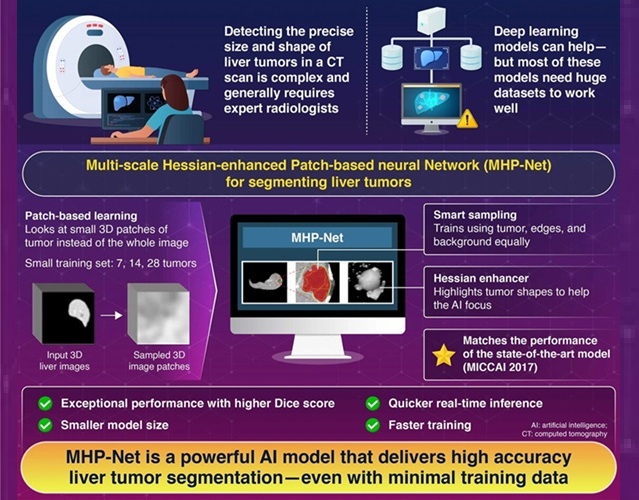
Groundbreaking AI Model Accurately Segments Liver Tumors from CT Scans
Liver cancer is the sixth most common cancer worldwide and a leading cause of cancer-related deaths. Accurate segmentation of liver tumors is critical for diagnosis and therapy, but manual methods by radiologists... Read more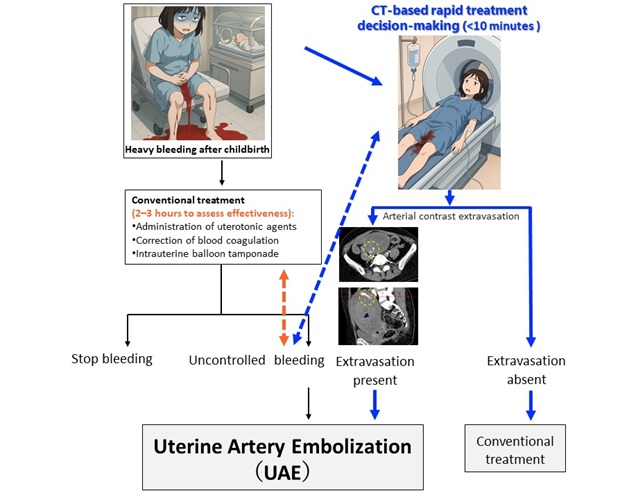
New CT-Based Indicator Helps Predict Life-Threatening Postpartum Bleeding Cases
Postpartum hemorrhage (PPH) is a leading cause of maternal death worldwide. While most cases can be controlled with medications and basic interventions, some become life-threatening and require invasive treatments.... Read moreImaging IT
view channel
New Google Cloud Medical Imaging Suite Makes Imaging Healthcare Data More Accessible
Medical imaging is a critical tool used to diagnose patients, and there are billions of medical images scanned globally each year. Imaging data accounts for about 90% of all healthcare data1 and, until... Read more
Global AI in Medical Diagnostics Market to Be Driven by Demand for Image Recognition in Radiology
The global artificial intelligence (AI) in medical diagnostics market is expanding with early disease detection being one of its key applications and image recognition becoming a compelling consumer proposition... Read moreIndustry News
view channel
GE HealthCare and NVIDIA Collaboration to Reimagine Diagnostic Imaging
GE HealthCare (Chicago, IL, USA) has entered into a collaboration with NVIDIA (Santa Clara, CA, USA), expanding the existing relationship between the two companies to focus on pioneering innovation in... Read more
Patient-Specific 3D-Printed Phantoms Transform CT Imaging
New research has highlighted how anatomically precise, patient-specific 3D-printed phantoms are proving to be scalable, cost-effective, and efficient tools in the development of new CT scan algorithms... Read more
Siemens and Sectra Collaborate on Enhancing Radiology Workflows
Siemens Healthineers (Forchheim, Germany) and Sectra (Linköping, Sweden) have entered into a collaboration aimed at enhancing radiologists' diagnostic capabilities and, in turn, improving patient care... Read more













